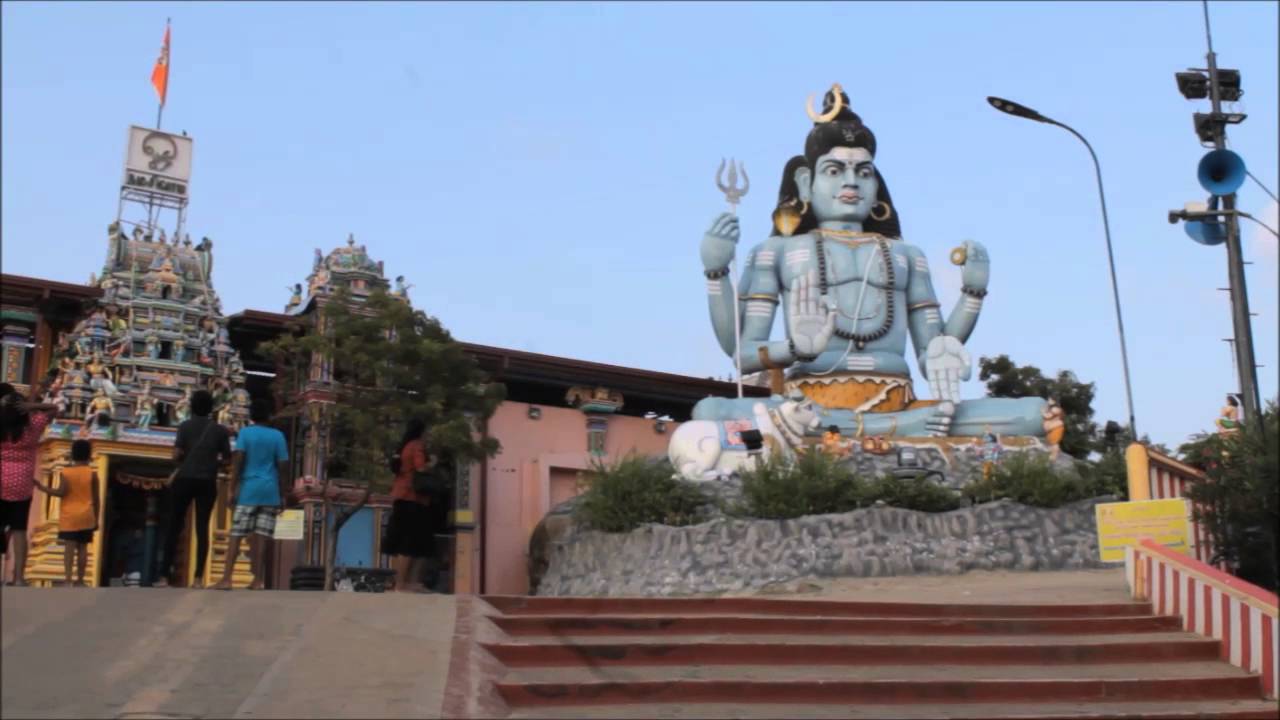Among the 51 revered Shakti Peethas spread across South Asia, Shankari Devi Temple in Sri Lanka holds a unique and sacred place. According to legend, it is here that the groin (inguinal part) of Maa Sati fell when Lord Vishnu cut her body into pieces with his Sudarshan Chakra to calm Lord Shiva’s grief-filled Tandava. This makes Shankari Devi one of the most powerful Shakti Peethas, symbolizing the eternal presence of Shakti beyond borders.
What sets Shankari Devi apart from many other Shakti Peethas is not just its religious significance but also its location outside India. Nestled within the premises of the ancient Trikoneswaram Temple in Trincomalee, Sri Lanka, Shankari Devi is both a spiritual and cultural bridge between Indian and Sri Lankan traditions.

Historical Background of Shankari Devi Temple
The Shankari Devi shrine is believed to date back thousands of years. It is mentioned in several Puranas and Tantric texts describing the Shakti Peethas. Over the centuries:
- The shrine became an important pilgrimage site for Hindu travelers, especially those from South India.
- It flourished under the Chola dynasty, who were great patrons of Shaivism and Shaktism. The Cholas built grand temples in Sri Lanka, and Shankari Devi was one of them.
- The shrine also endured invasions, colonial disruptions, and periods of neglect, yet the faith in Maa Shakti’s presence never diminished.
Today, Shankari Devi Temple is part of the Trikoneswaram Temple complex, a famous Shiva temple overlooking the Indian Ocean. This association with Lord Shiva strengthens the connection of Shakti and Shiva as inseparable divine forces.
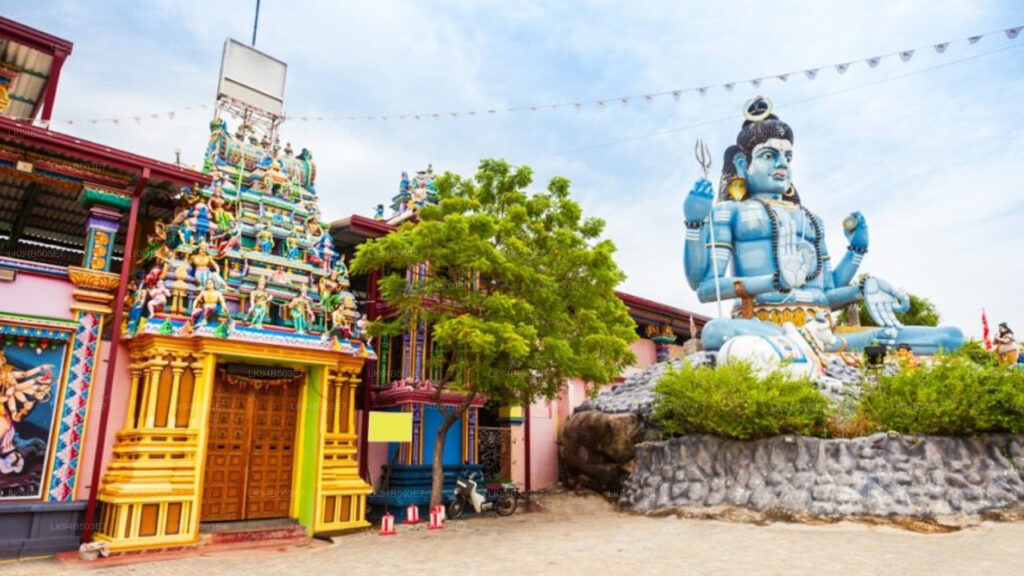
Geography and Location
- Where it is: Shankari Devi Temple is located inside the Trikoneswaram Temple complex in Trincomalee, on the eastern coast of Sri Lanka.
- Scenic Beauty: The temple stands on Swami Rock, a cliff that rises dramatically over the Indian Ocean. The breathtaking view of the turquoise waters makes it not only a spiritual site but also a place of immense natural beauty.
- Accessibility: Trincomalee is accessible by road, rail, and air from Colombo. The temple itself attracts both religious pilgrims and tourists.
Religious Significance
The Shakti Peethas are considered seats of immense divine power, each representing a specific part of Maa Sati’s body. Shankari Devi is especially revered because:
- It symbolizes feminine creative energy and strength.
- Devotees believe that worship at this Peeth grants protection from obstacles, prosperity, and blessings for fertility and family well-being.
- It is also regarded as a site for spiritual awakening, as the location on the oceanfront is believed to carry strong cosmic vibrations.
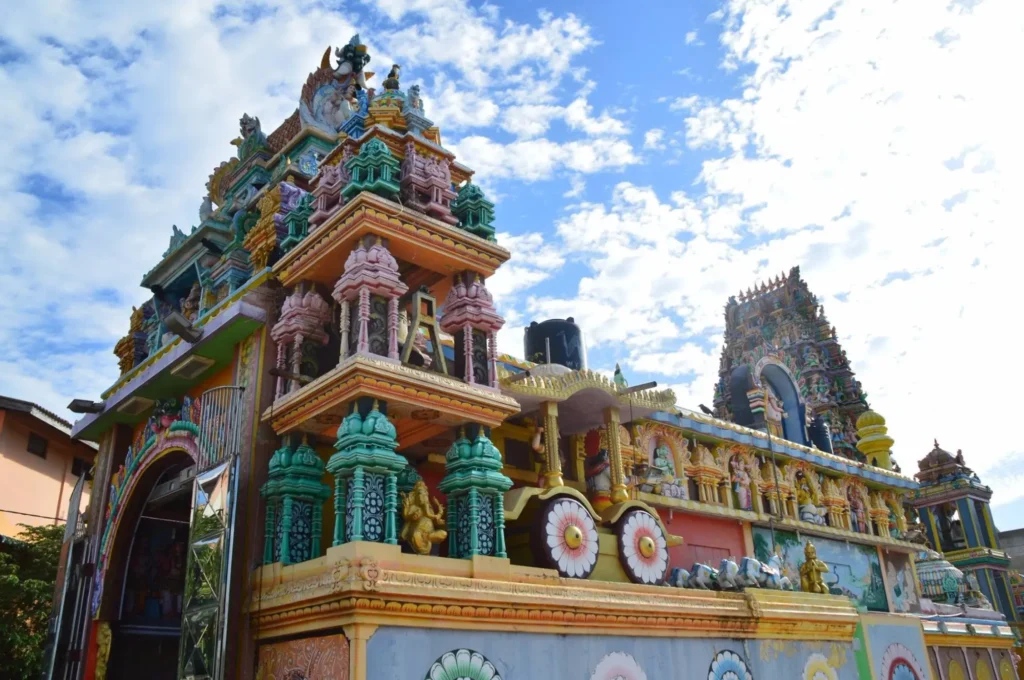
The Architecture of the Temple
The Shankari Devi shrine is relatively simple compared to larger Indian Shakti temples but carries a powerful aura:
- Design Influence: The temple shows a blend of Dravidian and Sri Lankan architectural styles, influenced by the Cholas.
- Shrine Placement: The sanctum dedicated to Shankari Devi lies within the Trikoneswaram complex, alongside shrines to Lord Shiva.
- Sacred Environment: Surrounded by the sea and high cliffs, the setting itself creates a feeling of divine presence. Many pilgrims describe the place as spiritually charged.
Myths and Legends
Like every Shakti Peeth, Shankari Devi has its stories rooted in faith:
- Maa Sati’s Groin Fell Here: The temple’s primary legend states that the groin of Maa Sati fell in this location, making it one of the most important Shakti Peethas.
- Blessings of Shakti: Local traditions believe that Maa Shankari protects Sri Lanka and its seas, ensuring safety for fishermen and seafarers.
- Trikoneswaram Connection: Since the shrine is part of a Shiva temple, it is said that here one can experience the divine union of Shiva and Shakti more intensely than anywhere else.
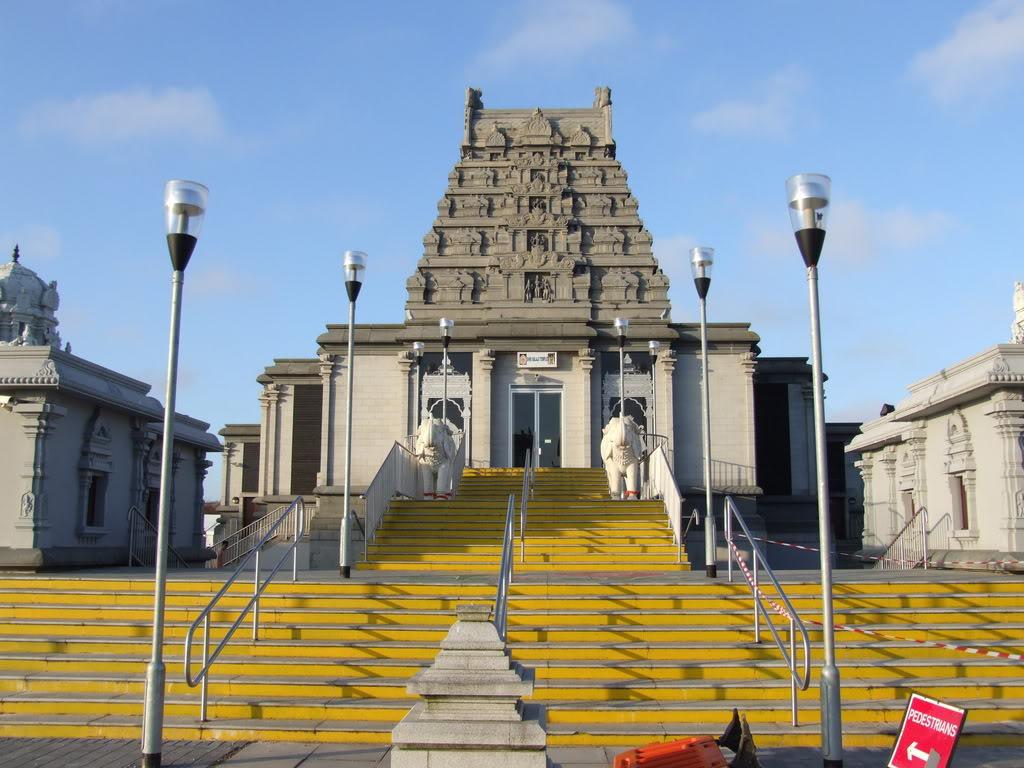
Pilgrimage Experience
Pilgrimage to Shankari Devi Temple is an emotional and spiritual journey:
- Devotees from India: Many pilgrims from Tamil Nadu and Andhra Pradesh visit the shrine, often combining it with a trip to other sacred temples in Sri Lanka.
- Offerings: Devotees offer flowers, coconuts, fruits, and red cloth to the goddess. Special pujas are held during Navratri and other festivals of Shakti.
- Festivals: During Navratri, thousands of devotees from both India and Sri Lanka gather here, making it a vibrant cultural and spiritual event.
Festivals and Rituals
Festivals at Shankari Devi are vibrant, filled with devotion, music, and color.
- Navratri:
- The nine nights of Navratri are the most important celebration at the temple.
- Devotees fast, sing devotional songs, and participate in daily pujas to honor the goddess.
- The temple is decorated with flowers and lamps, and cultural programs are often organized.
- Chaitra Purnima and Ashwin Purnima:
- These full-moon days see a surge of pilgrims, as many believe worshipping the goddess on these nights fulfills wishes.
- Special Pujas:
- Women often pray at Shankari Devi for fertility and marital harmony.
- Fishermen and sailors pray for safe journeys, as the goddess is believed to protect those who travel by sea.
The rituals are relatively simple but carry immense emotional power, reflecting the belief that faith matters more than elaborate ceremonies.
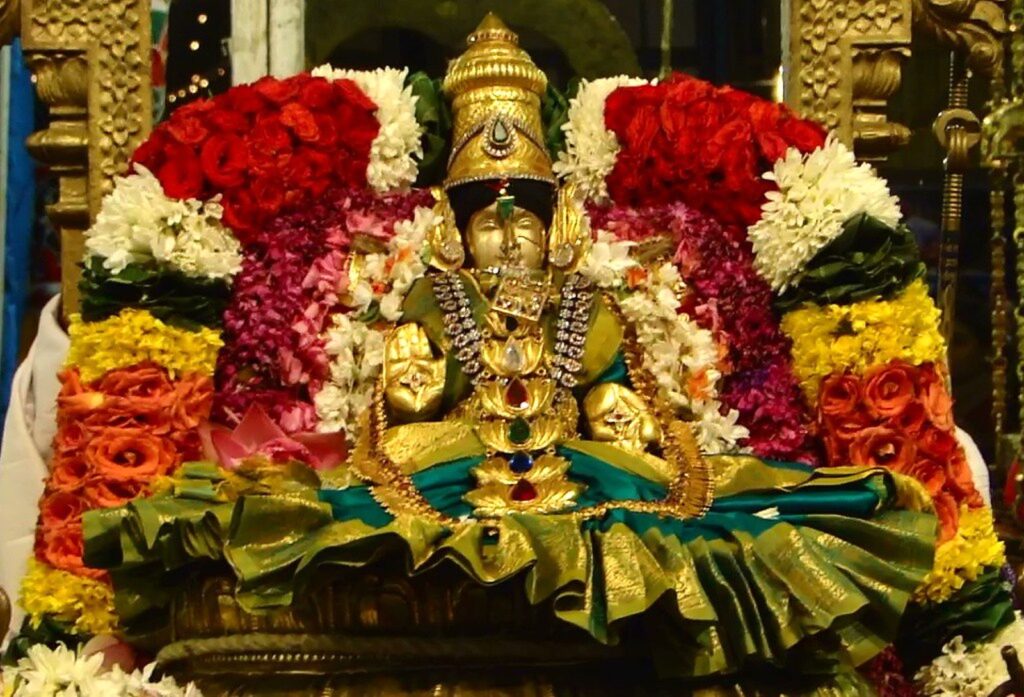
FAQs for Shankari Devi Temple
1. Why is Shankari Devi Temple famous?
Shankari Devi Temple is a revered Shakti Peetha in Sri Lanka, dedicated to Goddess Shankari, a form of Goddess Parvati.
2. Where is Shankari Devi Temple located?
It is located in Trincomalee, Sri Lanka, near the famous Koneswaram Temple.
3. What is worshipped at Shankari Devi Temple?
The temple is dedicated to Goddess Shankari (Shakti), symbolizing divine energy and power.
4. What are the temple timings?
The temple is generally open from 6:00 AM to 8:00 PM, though timings may vary with local rituals.
5. Is photography allowed inside Shankari Devi Temple?
Photography is restricted inside the sanctum, but visitors can click photos around the temple complex.
6. What is the significance of Shankari Devi as a Shakti Peetha?
It is believed that the groin of Goddess Sati fell here, making it one of the 51 Shakti Peethas.
7. How can I reach Shankari Devi Temple?
The temple can be reached via Trincomalee town, which is accessible by road, train, and domestic flights in Sri Lanka.
8. Are there any special rituals at Shankari Devi Temple?
Yes, devotees perform aarti, puja, and offerings, with special celebrations during Navratri and Durga Puja.
9. Is there accommodation near Shankari Devi Temple?
Yes, Trincomalee offers hotels, guesthouses, and lodges suitable for pilgrims and tourists.
10. What is the best time to visit Shankari Devi Temple?
The best time is October to March, when the weather in Trincomalee is pleasant and pilgrimage-friendly.

